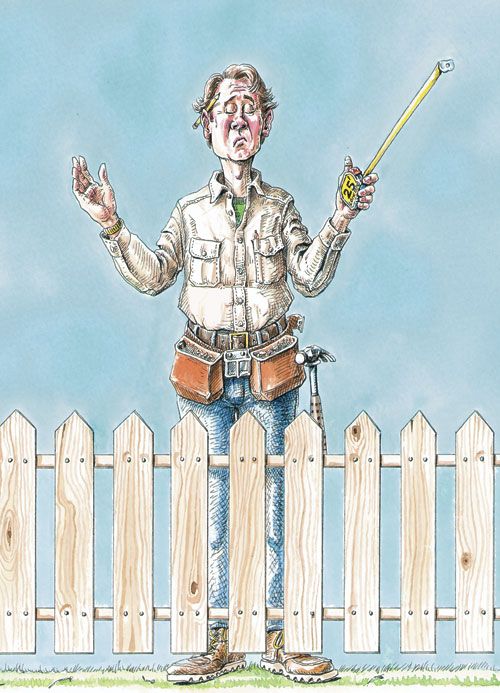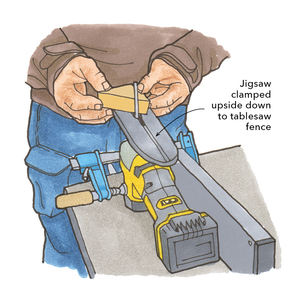A Musical Fence
Great moments in building history: How a seemingly simple fence can be much more than just that

I recently designed and rough-framed an addition for my brother’s home in Reidsville, North Carolina. We added a kitchen, a pantry, a two-car garage and a sewing room. His house is a Cape Cod with a 12-in-12 roof. The addition reflects the geometry of the house, so early on, I sought a way to individualize the project.
Some of the older homes in North Carolina have man and wife trees in the front yard. These trees were oaks or pecans planted to celebrate a marriage. When you drive along a country road and you see two trees with trunks larger than two people can reach around standing above second-growth forest, you know they mark the home site of a family that once farmed the surrounding fields. And if you force your way through the briars and past the two trees, you discover the broken footprint of a home with a stub of brick or stone chimney still standing. The trees are testimony to the strength required to hold a family together and to the echoes that act sends into the future. That is what I wanted to add to my brother’s house: a bit of poetry.
But for me to plant man and wife trees in front of his house was a different story. What if one of the trees I planted withered and died or was struck by lightning or prospered while the other lingered? Or what if one got tent worms and the other developed goiterlike galls? What then? The metaphor proved too potent for me.
So instead, I decided to do something I’ve always wanted to do and figured my brother—because he is my brother—would let me do: build a musical fence.
Music consists of sounds spaced apart in time. Striking a picket with a stick generates sound. Walking along and dragging a stick across pickets generates time. If the pickets are spaced and sized right, the beat of a tune can be produced.
I had thought that the tune would require the pickets to appear to be randomly spaced, incongruous with the geometry of the house, requiring a second look by passersby. I discovered, of course, that music has geometry. The fence belies its nature and looks ordinary, just as man and wife trees appear ordinary until they are explained. The tune I chose was structured so that I could arrange it symmetrically. With a three-beat introduction, it plays the same going and coming.
I also found that generating time is not a simple mathematical exercise with eighth notes equaling so many running inches on the fence, quarter notes twice that and half notes twice again. I found that the stick slows down as it crosses the wood and then leaps through the intervening space to the next picket, distorting time. Time and space do not exist in a simple ratio on the fence. To overcome this dilemma, I altered the width of the pickets instead of the spaces between them, slowing or speeding the time by the drag of the stick.
The 16-ft. fence I built plays the first two lines of a traditional ballad. The words can be sweet or poignant, depending on how life happens to find you on that particular day. To sing the song as you walk requires a slow, steady pace. The tune comes to life only if you focus on it and want it to. It is a deliberate act, a meditation on the nature of love performed as a simple ritual on the way to work in the morning or before reuniting with your spouse after a hard day.
The fence is simple. It cost a half-day’s work and some materials. I built it as a blessing for my brother’s new home.
—Ric Lassiter, Boncarbo, CO; [email protected]
Drawing by: Jim Meehan
Fine Homebuilding Recommended Products
Fine Homebuilding receives a commission for items purchased through links on this site, including Amazon Associates and other affiliate advertising programs.

Affordable IR Camera

Reliable Crimp Connectors

Handy Heat Gun

























